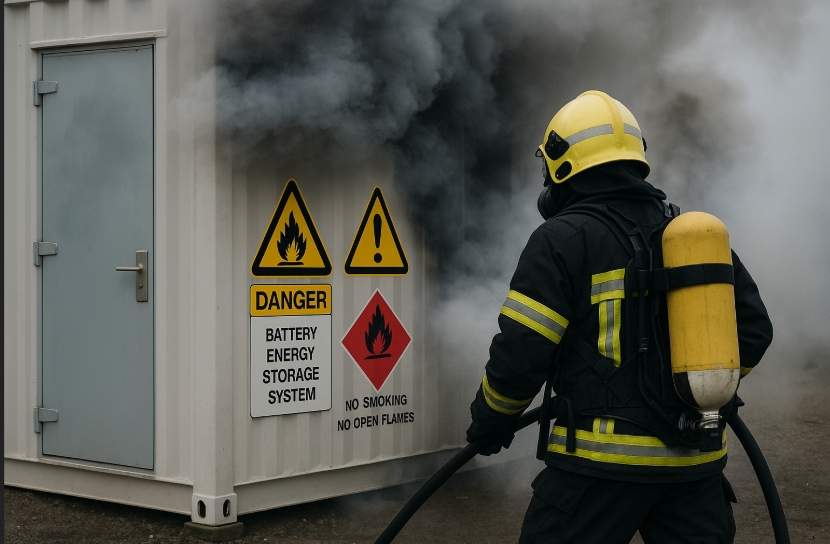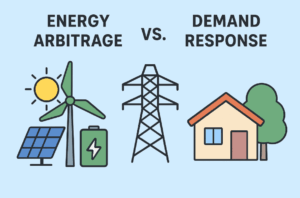- You have no items in your shopping cart
- Subtotal: $0.00

Hazards of ESS: As Energy Storage Systems (ESS) become increasingly widespread in homes, businesses, and utility-scale projects, so do the safety concerns. While these systems are essential for modern energy management—especially for integrating renewables like solar and wind—they also pose unique and serious risks that must be addressed proactively.
Understanding these hazards is critical for system designers, integrators, firefighters, and end-users alike. This blog highlights the most significant dangers associated with ESS and why awareness and mitigation measures are more important than ever.
⚠️ 1. Thermal Runaway: A Dangerous Chain Reaction
Focus Keyword in Heading: Hazards of ESS
Thermal runaway is one of the most well-known and dangerous hazards of ESS. It refers to a scenario where a battery cell rapidly releases heat in an uncontrolled manner. This can happen when:
- The cell is overcharged or physically damaged
- Internal defects or high ambient temperatures occur
- There is poor thermal management in the battery pack
🧯 This is often the starting point of major ESS fires and requires urgent and professional intervention.
⚡ 2. Stranded Energy: Hidden Danger After the Fire
Unlike typical electrical fires, an ESS might still hold stranded energy even after the visible flames are extinguished. This leftover charge is a shock hazard to first responders and technicians attempting cleanup or overhaul.
Damaged terminals and inaccessible energy circuits can make it nearly impossible to safely discharge the system. Worse, stranded energy may cause reignition—a fire that restarts hours or even days later.
🔌 Proper isolation protocols and post-incident inspections are crucial for safety.
💨 3. Toxic and Flammable Gases Generated
During thermal runaway, batteries emit toxic and flammable gases such as:
- Hydrogen
- Carbon monoxide
- Hydrofluoric acid
- Other volatile organic compounds (VOCs)
If these gases accumulate in a closed space like a battery room or container, they can create an explosive atmosphere. If the gas ignites before reaching its lower explosive limit (LEL), a catastrophic explosion may follow.
🛑 Good ventilation and gas detection systems are essential for ESS facilities.
🔥 4. Deep-Seated Fires: Hard to Reach, Harder to Extinguish
Many ESS units are built with multiple layers of protective casings—plastic or metal enclosures housed within battery racks or cabinets. While these designs protect the equipment, they also trap heat and flames inside.
This leads to “deep-seated fires,” which:
- Require large volumes of water to suppress
- Can be difficult for firefighters to locate and cool
- May continue to smolder unseen for long periods
🚒 Traditional fire suppression systems may not be effective without direct access to the battery core.
Why These Hazards of ESS Demand Attention
The rise in ESS installations—especially in urban and residential areas—demands a heightened level of awareness, training, and system design. From manufacturing to commissioning and emergency response, everyone involved must understand the risks to reduce the potential for disaster.
Proper safety practices include:
- Using certified ESS components
- Installing gas and temperature monitoring systems
- Following NFPA 855 and other relevant fire codes
- Training local fire departments and responders
- Conducting regular safety audits and inspections
🔍 Real-World Example for Hazards of ESS: A Wake-Up Call
In 2019, a lithium-ion battery facility in Arizona experienced a massive explosion during a post-fire inspection. The incident injured several firefighters and was traced back to stranded energy and flammable gases. This case prompted a global reevaluation of safety standards for ESS installations.
✅ Final Thoughts: Prevention Is Better Than Firefighting
Energy Storage Systems are critical for a sustainable energy future—but they must be deployed with safety in mind. Understanding the hazards of ESS isn’t just about preventing property loss—it’s about saving lives, protecting the environment, and building trust in the technology.
Before installing or managing an ESS, ask yourself:
- Is the system tested and certified for fire and explosion risks?
- Have we planned for worst-case scenarios?
- Is our team trained to handle ESS emergencies?
If the answer to any of these is “no,” then now is the time to act.
📌 Hazards of ESS Frequently Asked Questions (FAQs)
Q1: What is thermal runaway in batteries?
A: Thermal runaway is a rapid, uncontrollable increase in temperature within a battery cell, which can lead to fires or explosions.
Q2: What is stranded energy?
A: Stranded energy refers to remaining electrical charge in an ESS even after a fire, which poses a risk of electric shock or reignition.
Q3: Can ESS fires reignite on their own?
A: Yes, due to stranded energy or deep-seated heat, ESS fires can reignite hours or even days later.
Q4: What gases are released during ESS failures?
A: Gases like hydrogen, carbon monoxide, and hydrofluoric acid—many of which are toxic and flammable.
Q5: How can we reduce the risks associated with ESS?
A: Use certified components, install ventilation and gas detection systems, and ensure emergency response teams are trained for ESS incidents.



